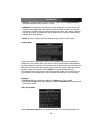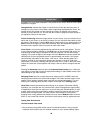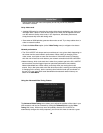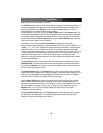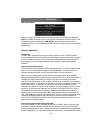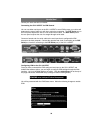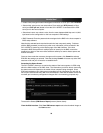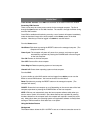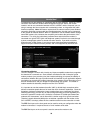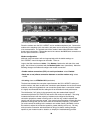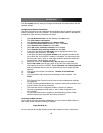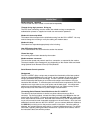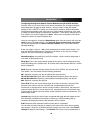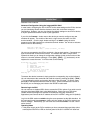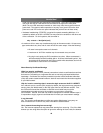
increased security and flexibility in connecting with the host computer. Unlike the TCP/IP
connection used with the standard Web configuration and VNC clients, the modem
creates a one-to-one connection between the SV1115IPEXT and the computer you are
using to manage the host computer that is essentially private, as it bypasses the public
Internet completely. Note: this feature requires both an external modem (most standard
connection protocols are supported) and a dedicated phone line that can be connected
to the modem for external access. While it is possible to use the modem feature through
some PBX systems, this increases the complexity and reduces the performance of the
connection. For clarity, the instructions presented here assume that the modem is
connected to a typical POTS (plain old telephone system) line that is not routed through
a phone management system or shared with other devices. If you wish to use this
feature through a PBX system, it may require some experimentation and additional
support from your telecom services provider, and is not supported by StarTech.com.
Connecting a Modem
The SV1115IPEXT will work with virtually any Hayes-compatible modem that recognizes
the standard AT command set. Some modem manufacturers offer “enterprise” grade
modem products (at a premium price) that include technology to improve the stability of
connections; whether this type of product would be beneficial to your application depends
on whether you consider the modem connection to be mission-critical, the quality of your
telecom infrastructure, and your budget for implementing this solution. The model of
modem attached is essentially transparent to the SV1115IPEXT.
It is important to note that modems that offer “56K” (or 56,000 bps) connections often
achieve connection speeds that are far lower than their maximum capabilities. Given the
limitations of telecom infrastructure (many locations have yet to implement fully digital
switching technology, and still rely on older analog technology for some segments), the
maximum “upstream” transfer rate is limited to a maximum of 33,600 bps between two
modems; the “downstream” rate is often within a similar range for a typical connection.
Therefore, speeds below 56,000 bps do not indicate a problem with the modem or the
SV1115IPEXT, but simply reflect the line conditions at the time the connection is made.
The DTE Serial port on the front panel can be used for serial port configuration when the
modem is connected. It requires the use of a null modem serial cable.
The DCE Serial port on the rear panel is used to connect the modem to the
Instruction Manual
35



